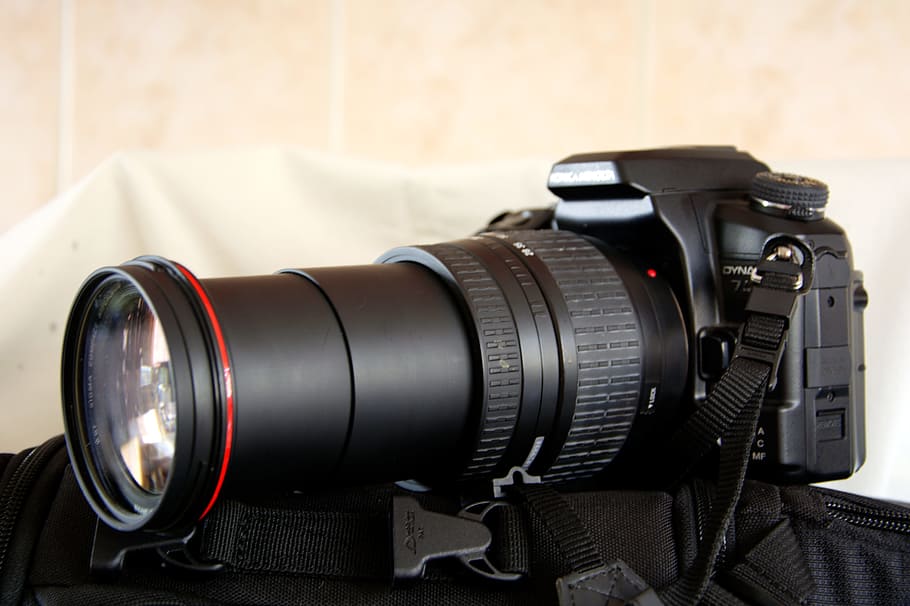Find out more about telephoto lenses and what kinds of subjects benefit from long focal lengths.
Additionally, learn how depth of field affects an image.
What is Telephoto photography?
Long focal lengths are used in telephoto photography to close the distance between the camera and the subject. While shorter focal lengths exaggerate near-proximity images, distant subjects, such as animals, nature, things & people, can be emphasized and brought closer using SLR Camera Lenses.
Telephoto lenses allow you to get up and personal with your subject. With a longer lens, something known as compression occurs when the background appears to be closer to the subject.
Telephoto lens types-
Any camera with an interchangeable lens system, such as film, DSLR, or mirrorless digital cameras, can be used for telephoto photography.
Additionally, a variety of telephoto lenses are available from all major lens manufacturers, such as Sony, Canon, Sigma, Nikon & more, ranging in length from 70mm to super telephoto lenses that are longer than 300mm.
Typical telephoto lens lengths-
A zoom lens with a focal length range of 24mm to 70mm lies halfway between the longest wide-angle and the shortest telephoto lenses. Its versatility lets you switch between a broad view at 24mm and a compressed perspective at 70mm, making it a good lens for landscape photography.
A common telephoto zoom lens range, 70mm–200mm, is excellent for portraiture and can highlight prominent background features like mountains or a city skyline.
200mm–500mm SLR Camera Lenses, this range of focal lengths enables photographers to take distant photos of sporting events, wildlife and other scenes requiring some magnification.
Any lens that is 300mm or longer is a super telephoto lens. For the smallest or furthest away subjects, such flying birds provide the greatest extreme magnification.
Compared to prime lenses, zoom lenses.
A telephoto lens can be adjusted to multiple focal lengths, but a prime telephoto lens is designed for a single focal length. Although prime lenses can frequently produce a wider maximum aperture and clearer photos, zoom lenses are more adaptable.
Prime is your best option if you require a wide aperture or a clearer image. A typical lens used for bird photography is a 500mm prime.
Zoom levels and lenses
Remember to consider whether you have a full-frame camera or a camera with a crop factor when selecting a lens. A full-frame camera features a full-frame sensor; thus, the viewfinder displays your whole image. In contrast, regardless of the lens you use, a crop sensor like the APS-C will produce slightly closer-cropped images than you may anticipate.
Subjects for telephoto lens photography
With a telephoto lens, you can capture almost anything as long as it is far enough from you to be in the focus range of your lens. These lenses are fantastic for photographing far-off wildlife, people, and urban or mountainous landscapes.
- Photography of wildlife.
A telephoto lens’ magnification is necessary to photograph animals’ delicate features without upsetting them. A telephoto lens is the most important equipment in the arsenal for wildlife photographers.
There must be a balance between getting as near as you desire and the budget of the equipment because, of course, larger lenses cost more. However, most individuals who photograph animals require at least 400mm or more.
- Photography of people
Telephoto lenses in the 70mm to 85mm range work well for taking portraits. Anything at the front of the image is drawn toward you because a wide-angle lens emphasizes how far apart things are.
Since the nose is closest to the camera while taking pictures of individuals, this is a pretty poor situation. No one wants their nose to appear larger in photos. The subject’s facial features are compressed when you stand back and use a longer lens. And generally speaking, that’s flattering.
- Skylines and landscape pictures
A telephoto lens is an excellent tool if you want the background to stand out and be more prominent in the picture. Telephoto lenses can thus provide extraordinarily dramatic vistas and skylines in photographs.
Best practices for telephoto lens photography.
- Bring a tripod.
Consider purchasing a tripod that can hold the weight of your lens because telephoto lenses are larger and heavier than most lenses. Even though a tripod supporting a wide-angle lens may appear to hold your telephoto lens securely, the added weight may cause the tripod to lean downward gradually.
- Increase the shutter speed
A quick shutter speed can still provide clear images if your camera isn’t on a tripod. One over the focal length is a decent general rule of thumb. In other words, if you’re using a 400mm lens, your shutter speed should be 1/400 of a second if I need to shoot more slowly to allow enough light to reach the sensor.
- Set the image stabilization to on
This crucial feature, sometimes referred to as vibration reduction, can aid you in preventing hazy photographs. A camera shake is likely increased because telephoto lenses are large and hefty. If you’re not using a sturdy tripod, it’s crucial to put on image stabilization.
Wrapping it up!
Get out there and practice telephotography to become familiar with it. Try new things and take photos as frequently as you can. Take pictures of as many subjects as you can. Examine the differences between an image taken with a wide-angle or mid-range lens and one taken with a telephoto lens.
Even though you might need a larger rucksack, using a telephoto lens while hiking could be beneficial.









































